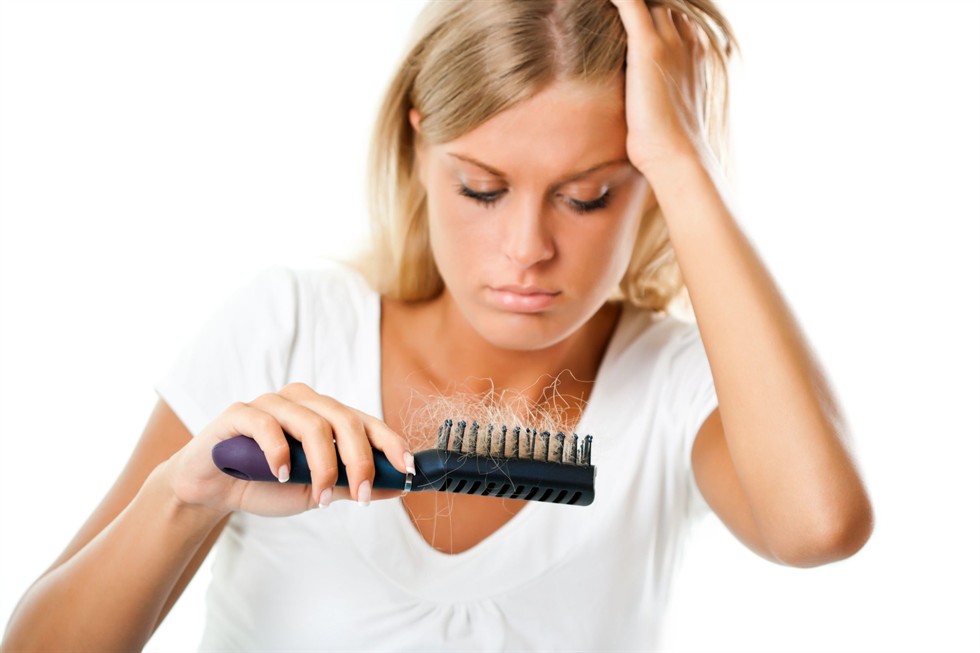FEMALE PATTERN HAIR LOSS
One of every three women has complaints related to problems including lifeless appearance of the hair, thinning of the hair and hair loss during any period of their lives.
Genetic type hair loss
Genetic type of hair loss constitutes an important portion of hair loss problems in women.
The psychological effect of male pattern hair loss which is observed in 30 million women in USA is 75% more heavier in women compared to men. It is experienced as a heavier stress. While men can accept male pattern hair loss, women can not.
The incidence of male pattern hair loss in women is 70%.
Before making a diagnosis of male pattern hair loss in women presenting with hair loss, an underlying disease should be investigated. For example, factors including hormonal, systemic diseases, cancer, imbalanced nutrition, infection, drugs, and chemical agents should be questioned. If male pattern hair loss is present in a woman, hair restoration can be performed.
20%*** of women with female pattern hair loss have a familial history
Hair loss starts at an advanced age and progresses slowly. Regular hair loss is experienced and hair loss generally makes a peak at the age of 40. Hair loss observed at younger ages is more severe. Genetic type hair loss is observed in different forms in men and women; it generally starts in the temporal regions in men and progresses to the apex. In women, it is observed as weakness and thinning in the whole of the hair.
This hair loss typically begins in the middle region of the hair and generally progresses without extending to the front hair line and temporal region. For an accurate diagnosis familial history should be investigated and previous diseases and drugs used previously should be questioned. Since female pattern hair loss makes all hair roots thinner, people with female pattern hair loss are not good candidates for hair transplantation.

Hormonal imbalances
Another important cause of weak hair and hair loss in women other than genetic type hair loss is hormonal imbalances and hormonal therapies. Oral contraceptives are frequently observed to cause hair loss.
Thyroid disease and iron deficiency
Hair loss is also observed during treatment of hormonal disturbance related to hyperfunction or hypofunction of the thyroid gland which are known as hyperthyroidism and hypothyroidism, respectively.
Iron deficiency anemia may arise from severe menstrual bleeding or decreased consumption of food rich in iron. Iron deficiency anemia is one of the most important reasons of weak appearance of hair and hair loss in women.
Imbalanced nutrition and stress
Inadequate nutrition is one of the factors leading to hair loss. Especially in individuals who are on unconscious diets and who consume an inadequate diet can not take vitamins, minerals and the protein which is the building block of keratin included in the structure of hair adequately.
As a result the hair gets weaker and hair loss occurs. It should be kept in mind that a healthy diet is rather important for healthy hair.
In addition, each factor which is a source of stress for the body will show its negative effect also on the hair.
Errors made in hair care
It should be known that some errors made in hair care in daily life also lead to hair loss in addition to all these environmental, genetic and individual factors. These include frequent use of chemicals like hair dyes and jelly, very tight and same kind of binding which will cause mechanical trauma, continuous blow-drying and procedures like forming with hair pin (especially wet hair). Cream application only on the ends and regular cutting of the ends are good precautions.
Valuable advices for women for hair care
- Avoid blow drying daily and avoid tying the hair up tightly in the same way daily.
- Do not let creams, hair stylers and jelly absorbed by hair roots.
- Wash the scalp in 24 hours after using jelly (in summer months, wash the scalp after a few hours after using jelly)
- Do not apply blow drying and hair pin to very wet hair. When the hair is very wet, it is very fragile and very sensitive to heat.
- Comb your hair once a day with a soft and elastic brush.
- Pay attention that brushes and combs are clean and disinfected regularly.
- Do not dye your hair more than once monthly
- Perform a DETOX program after processes which lighten the hair color.
- Hair discoloration as well as dying with dark colors tires not only the scalp, but also the liver. Do not repeat this type of procedures very frequently and make TRANSMED HAIR DETOX applied afterwards.
- After making the hair dyed with dark colors, folic acid, zinc and B12 vitamin are recommended to be used orally in high doses for 3 days in addition to TM DETOX.
- The term organic hair dye is completely a deception. Especially avoid ORGANIC hair dyes prepared by adding herbal mixture to AMMONIA based dyes. Ammonia interacts with keratin and trace elements intensively and damages the medullar layer of the hair and leads to dry, fragile hair.
- Make your hair ends cut at least 2 cm every 6-8 weeks. This will provide the hair to grow faster and be healthier.
- Have a blow dry less frequently in the summer.
- Do not tie your hair up when wet.
- If you are a man, do not shave your hair daily. Clinical studies have shown that 30% of all hair roots are lost in 10 years in men who let their hair shaved with deep contact daily.
- Women are recommended to have TM HAIR DETOX after hair dye rather than before.
Treatment of hair loss in women
In women with hair loss, a different diagnosis schema is used. For hair health in women, three important building stones should be analyzed in detail. These include
- Hormones
- Type of nutrition and other drugs used
- Genetic causes
The diameter of the hair strand and the density of hair are recorded by measuring at the first visit. THYROID, SURRENAL and OVARIAN HORMONE picture is established by systemic blood analysis. If deviations are noted in this picture, the patient is referred to related specialists.
The starting point of hair loss is recorded. HAIR SUPPORTERS which are beneficial for women at the highest level according to the stage of hair loss and the result of the examination:
a- Regulation of hormones
b- Regulation of diet and vitamin enzyme supplementation
c- LLLT-the most appropriate type of low level laser therapies
d- Reversa-especially if previous operation is present
e- TM hair DETOX
f- TM Hair MESOTHERAPY
g- Topical hormones
h-Education for use of topical hair drugs at home
i- Natural nutritional supplements-natural cures for hair loss
j- Washing hair with the right water
If the above mentioned hair supportive formulas are presented to the female patients with a right combination, they start to feel the improvement in 3-6 months. This improvement can be shown by objective measurements and with the number of new hair strands at the TM visit 6 months later.
*Matt Leavitt, Understanding and Management of Female Pattern Alopecia Facial Plast Surg, 2008; 24:414-427